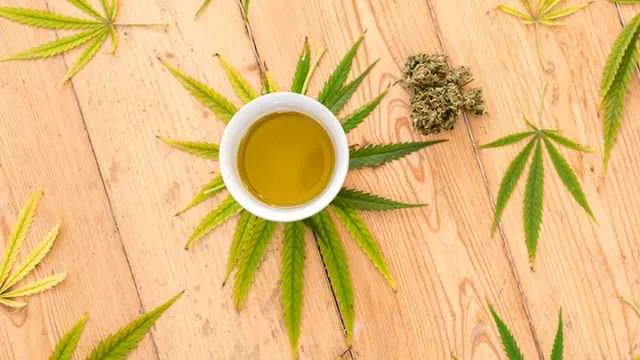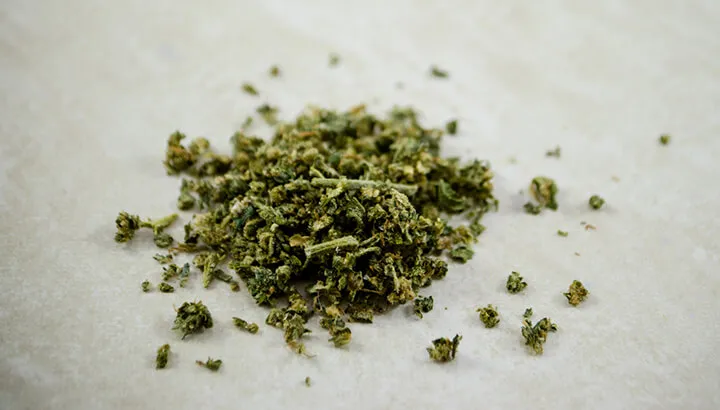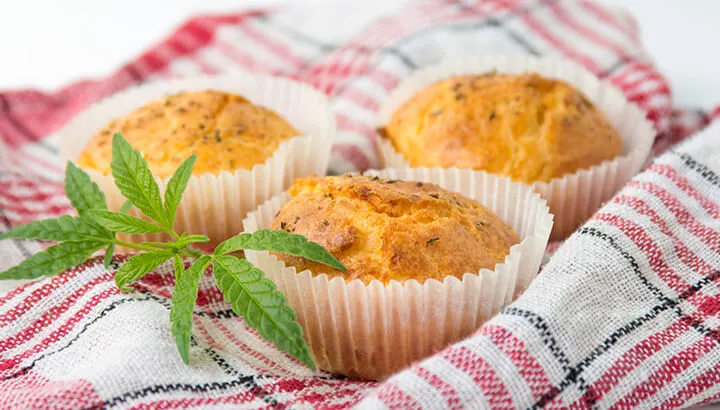
- Share on Facebook185
- Share on Pinterest
- Share on Twitter
Recently, there’s been a lot of buzz about the health benefits of marijuana. Studies and anecdotal evidence have been steadily accumulating that cannabis can help treat epilepsy, autism, chronic pain and multiple sclerosis. A recent NIH report — the most comprehensive summary yet of what science knows about pot — confirms that weed is indeed something of a wonder drug.
Of course, smoking grass is not always an ideal delivery method. Indeed, lighting up a joint can irritate the lungs while producing a “high” that can interfere with daily functioning. Fortunately, there are other ways of getting the medical benefits of cannabis without toking a pipe or a bong.
Cannabis edibles, in particular, are a great way of absorbing the medicinal compounds in marijuana, but without putting your lungs at risk (or tipping off your nosy neighbors that you are getting baked).
However, in order to properly cook with marijuana, you need to infuse it into a fat-based soluble such as butter or oil. Cannabutter is a popular choice for cannabis connoisseurs. However, this article will focus on infusing weed into olive oil. Nevertheless, the principles are virtually the same — if you can make one, then you should be able to make the other. Here’s what you need to make your very own cannabis-infused olive oil:
Recipe for Weed-Infused Olive Oil
Ingredients
- 1 oz (28 grams) of marijuana
- 1 cup olive oil (may substitute coconut oil or canola oil)
Equipment
- Coffee grinder, blender or food processor to powderize your cannabis (optional)
- Saucepan (preferably a double boiler)
- Cheesecloth to strain your oil
- Glass bottle
Here are the instructions for how to infuse olive oil with weed:
1. Start by grinding up your grass

This stage is an art as much as it is a science. It is also a matter of personal preference. Basically, use a coffee grinder, blender or food processor to powderize your weed as finely as possible. This helps release the THC into the oil when cooking, while cutting down on the amount of herbal residue that ends up in the final product. Most people opt to remove seeds and stems at the outset, but leaving them in prior to grinding your stash can add both fiber and flavor.
2. Slow cook with cannabis
The next stage involves cooking your cannabis in oil at low heat for several hours. The best way to do this is with a double boiler. This cooking utensil, of course, has two nested pans. Fill the bottom saucepan about halfway with water. Then, add one cup of olive oil and one ounce of powdered weed to the top saucepan. Cook over a low heat while stirring the oil/cannabis mixture occasionally. You’ll need to keep a careful eye on your concoction. It’s important than the oil/cannabis mixture gently simmers but never boils. If the oil starts bubbling rapidly, then reduce the temperature. Heating the mix slowly helps a process called decarboxylation, which releases the THC and active ingredients from the plant material and allows them to be absorbed in the oil. Generally, you’ll achieve the best result by heating the oil/cannabis mixture for six to eight hours, but if you are impatient, three to four hours can often suffice.
3. Strain and store the finished oil
After cooking for so long, your oil/cannabis mixture is bound to be hot. Turn off the heat and allow it to cool off. Then, strain the oil through a cheesecloth and add to a suitable glass bottle. Any remaining plant residue can be discarded. Refrigerating your cannabis olive oil will help keep it fresh for months.
Weed-infused olive oil is versatile
Weed-infused olive oil opens up a world of culinary possibilities. Indeed, cannabis fried chicken, heavenly vinaigrettes and a mind-bending array of baked goods are possible with weed-infused olive oil. In theory, you can use it in any recipe that calls for vegetable oil. For example, use weed-infused olive oil instead of traditional alternatives (like Crisco) when making brownies. The results will be out of this world. Just be sure to store any leftovers in an airtight container (where the kids can’t get at it).
Edibles versus smoking

Consuming cannabis via edibles provides a different kind of high. Generally speaking, it’s a mellower but longer-lasting experience. When you smoke pot the THC goes right to the brain, which can produce the intense rush many people describe. On the other hand, with cannabis edibles, the THC is released more gradually — and not just to the brain, but to the entire body (yes, there are cannabinoid receptors in virtually every type of cell). Therefore, cannabis edibles have a much more holistic effect on the body. From a health standpoint, eating marijuana is usually better than smoking it, particularly when it comes to alleviating anxiety, depression or chronic pain.
However, it takes longer for cannabis edibles to kick in. For instance, it typically takes one to two hours after eating pot brownies for the effect to begin. But the high lasts considerably longer — often three to eight hours. So, be sure to plan according. In particular, driving or operating heavy machinery are not recommended following a batch of weed-baked goodies. In fact, you are likely to feel quite sleepy afterward. Indeed, the edible experience can be quite different than smoking. Therefore, educating yourself beforehand about what to expect is a wise idea.
Admittedly, cannabis is not renowned for being the ultimate flavor-enhancing ingredient. However, if you hope to derive the medical or recreational benefits of marijuana, then edibles are a great way to go. In particular, weed-infused olive oil is a versatile and health-conscious alternative to smoking. Just be sure to enjoy responsibly in the safety of your own home.
— Scott O’Reilly
- Share on Facebook185
- Share on Pinterest
- Share on Twitter

